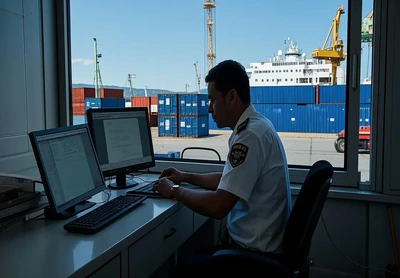
According to reports, as an important waterway for global trade, severe drought is forcing the Panama Canal to introduce shipping restrictions, that is, to adjust the draft limit of large ships.
This means that container ships must lighten their load and pay higher fees if they want to pass through the Panama Canal. It is expected that the cost of transporting goods through the Panama Canal will rise further this summer, and the goods may also face delays.

The Panama Canal connects the Pacific Ocean and the Atlantic Ocean, with a total length of more than 80 kilometers, it is a lock-type canal and 26 meters higher above sea level. Carrying about 6% of the world's sea freight (mainly from the United States, China and Japan), the canal is an important waterway for global trade. Ships use the sluices to raise and lower the water level as they pass, each time requiring the discharge of 200 million liters of fresh water into the ocean. The fresh water comes mainly from the nearby Gatun Lake and Alajuela Lake, and the two artificial lakes are mainly fed by precipitation.

It is understood that from February to April, the rainfall near the canal and the lake that feeds the canal is less than half of the normal level, and the rainy season, which usually starts before summer, is also showing no sign this year. This year's rainfall is on par with 2019 and the lowest in 20 years, according to Everstream Analytics.
Jon Davis, chief meteorologist at Everstream Analytics, said Panama will continue to see below-normal rainfall for the current and future period. As a result, the water levels of the lakes that feed the Panama Canal will continue to drop, which will make shipping in the Panama Canal even more difficult.

In the face of the drought, the Panama Canal Authority has adjusted the draft limit of large ships again. This is also the fifth adjustment made by the agency this year. That is, from May 24, the ships will be allowed a maximum draft of 44.5 feet (13.56 meters), compared with the previous limit of 45 feet. By May 30, the draft limit will be lowered again to 44 feet. Generally, 50 feet of draft is considered normal.

Peter, director of ocean freight at China freight specialist CUC Freight, said that while it may seem like a small change, it has major implications for shippers. First, it could reduce cargo on some container ships by as much as 40%. Secondly, if we continue to choose the Panama route as an example, the shippers who transport heavy cargo have to divide the cargo that can be loaded in one container into two containers for shipment, which means that the transportation cost will be increased on the basis of additional surcharges. Almost to be double. In addition, the goods will also face the possibility of delay. Taken together, this is undoubtedly a big blow to shippers.

In this regard, Peter suggested that shippers can choose to use the Suez Canal as an alternative route for cargo from Asia to the United States, or they can ship to ports in Southern California and then load containers onto trucks or trains bound for the Midwest and East Coast. In fact, some shippers are currently considering these options.
 Skyrocketing Sea Freight Rates: A Comprehensive AnalysisJune 21, 2024Since the end of the pandemic, sea freight rates have not experienced significant fluctuations, maintaining a steady course. However, starting from May, these rates have seen a continual rise. With ma...view
Skyrocketing Sea Freight Rates: A Comprehensive AnalysisJune 21, 2024Since the end of the pandemic, sea freight rates have not experienced significant fluctuations, maintaining a steady course. However, starting from May, these rates have seen a continual rise. With ma...view Attention please! Shanghai Port is closed due to heavy fog | Shipping company issues delay noticeApril 22, 2024Affected by the humid and warm air flow, heavy fog occurred in the areas along the Yangtze River Estuary in Shanghai on April 15. The visibility in the waters of the Yangtze River Estuary was less tha...view
Attention please! Shanghai Port is closed due to heavy fog | Shipping company issues delay noticeApril 22, 2024Affected by the humid and warm air flow, heavy fog occurred in the areas along the Yangtze River Estuary in Shanghai on April 15. The visibility in the waters of the Yangtze River Estuary was less tha...view How 200+ US Manufacturers Cut China Shipping Costs with Door to Door DeliveryMarch 13, 2025Discover how 217 US manufacturers achieved 21% average logistics savings through strategic door-to-door delivery from China. Learn their proven tactics: hybrid Incoterms configurations, supplier loading time optimization, and bonded warehouse networksview
How 200+ US Manufacturers Cut China Shipping Costs with Door to Door DeliveryMarch 13, 2025Discover how 217 US manufacturers achieved 21% average logistics savings through strategic door-to-door delivery from China. Learn their proven tactics: hybrid Incoterms configurations, supplier loading time optimization, and bonded warehouse networksview Guides For Importing From China To USAJune 27, 2023As an importer in the USA, it is essential to have a reliable and efficient shipping partner in China. Shipping from China to the USA can be a daunting task, especially for beginners. However, with th...view
Guides For Importing From China To USAJune 27, 2023As an importer in the USA, it is essential to have a reliable and efficient shipping partner in China. Shipping from China to the USA can be a daunting task, especially for beginners. However, with th...view